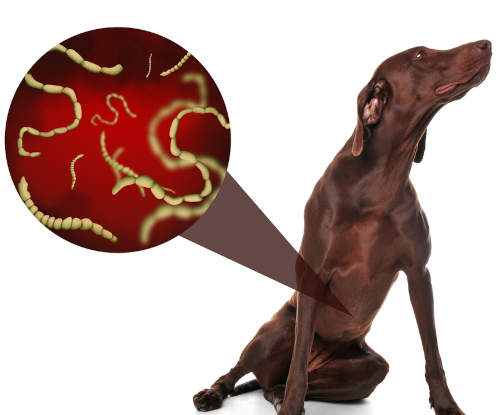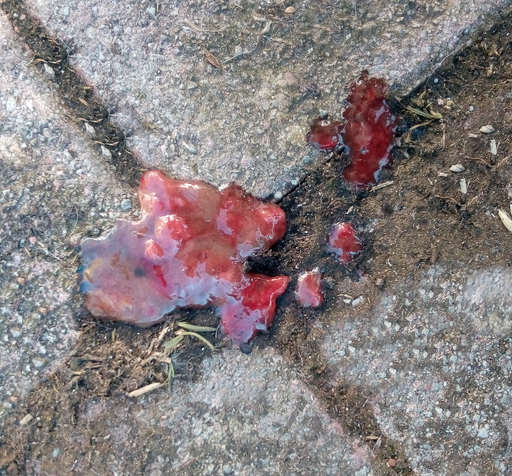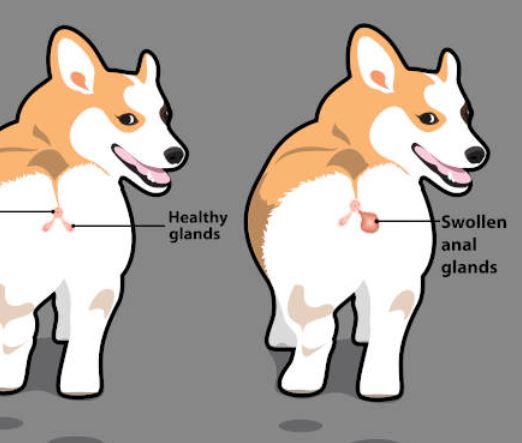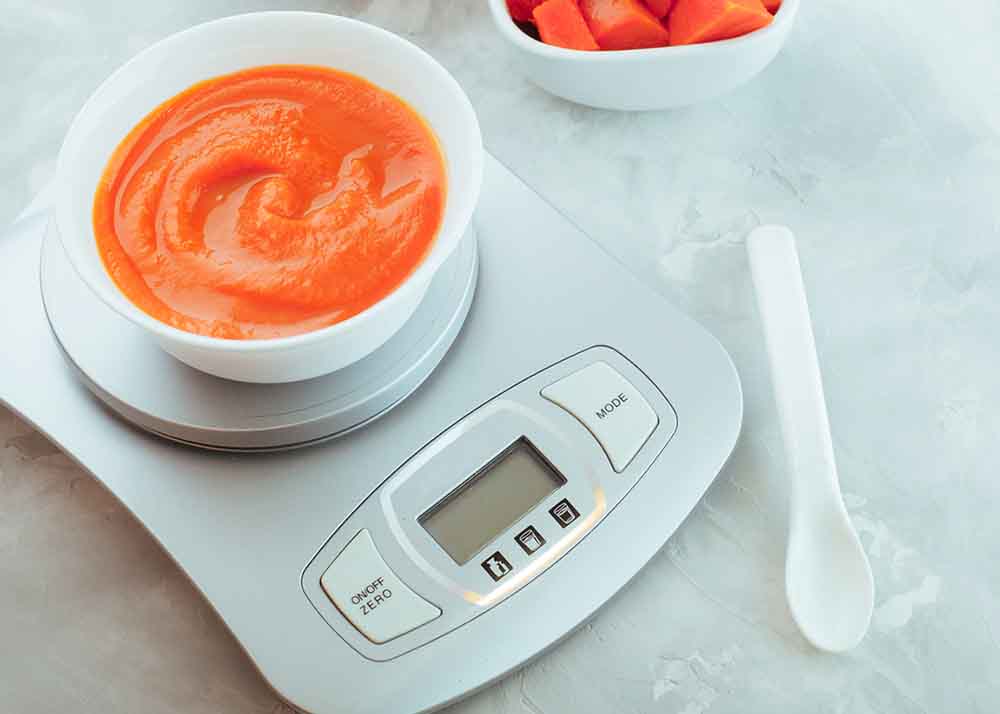Occasionally, owners will notice small amounts or streaks of blood in their dog’s stool. Blood in a dog’s stool can be fairly innocuous or a sign of a larger health issue. It is important to understand the potential causes and discuss the situation with your veterinarian.
Is a little bit of blood a reason to be concerned?

Dr. Whittenburg explains:
“If you notice bloody streaks in your dog’s poop once or twice and they aren’t showing any other signs, it may be nothing to worry about. If it becomes more frequent, or they aren’t eating, are vomiting, or are doing anything else abnormal, see your veterinarian as soon as possible.”
Sometimes, a small amount of blood, or streaking on the stool, is due to stress or straining during constipation. The blood should be only a small amount and the issue should clear up quickly (within a day or two).
Make an appointment with your vet if you see:
– Large amounts of blood,
– Other signs of illness such as vomiting, diarrhea, or a reluctance to eat, or
– Blood in stool multiple times (repeated occurrences can indicate the presence of parasites or other medical conditions).
Let’s now review the likely causes if you have seen blood in stool one time, or multiple times.
Likely causes if you have only seen blood in stool one time
1. Straining:
When a dog is constipated, they may have large, hard stool that they have to strain to get out. This may lead to the rupture of small blood vessels in the rectum and anus, which results in blood streaking on the outside of the stool.
If this is seen only once, and the dog goes back to defecating normally, there is likely little cause for concern. The dog should be encouraged to drink water, get exercise, and eat a healthy diet to resolve the constipation. If the constipation recurs, a veterinarian should be consulted.
2. Stress:
Sudden stressful situations, such as a vet visit or a stay in a boarding facility, can result in small amounts of blood and mucus in the stool. Stress results in inflammation in the colon, which reduces water absorption and impairs the colon’s ability to store feces. The result is often sudden bowel movements that may contain blood and mucus.
These signs could indicate that you should see your vet right away:
- Loss of appetite
- Large amounts of blood in stool
- Black, tarry stools
- Vomiting
- Lethargy
What you can try at home to help
If your dog is not showing any of the above signs (just blood streaks or a small quantity of blood in stools), you may try the following:
- Feed the dog their regular diet so as to not further upset their gastrointestinal tract.
- Consider a probiotic, such as FortiFlora.
- Keep a close eye on the dog and their bowel movements to ensure the problem has resolved.
(See other home remedies at the end of this article.)
Tip: If blood is seen in the stool more than once, it is recommended to take a sample of the stool and consult your veterinarian.
Likely causes if you have seen multiple episodes of blood in stool
1. Parasites:
Parasites such as roundworms, hookworms, giardia, and coccidia can result in loose stool, bloody stool, and diarrhea.

One way a dog owner can tell if their dog has worms is by observing signs such as changes in appetite, weight loss, or the presence of worms in the dog’s stool (see pictures). A vet can also determine if your dog is suffering with intestinal parasites by analyzing a stool sample. Most parasites can be eliminated with appropriate medication, but the correct medication must be chosen by your veterinarian to target the specific parasite(s) that your dog has.
2. Trauma
Larger or persistent amounts of blood in the stool may be a result of trauma. This is an emergency and the dog should be seen by a veterinarian as soon as possible. Treatment for trauma to the gastrointestinal tract will be dependent on the cause and the nature of the injury, but it is an emergency and must be addressed right away.
3. Colitis or Inflammatory Bowel Disease
Stress, infectious agents, and diseases such as inflammatory bowel disease can all result in blood in the stool, which may range from mild to severe.

These conditions will be treated with antibiotics, anti-inflammatories, and special diets, depending on the issue diagnosed.
4. Anal Sac Infections
The anal sac is often affected by infections and can become enlarged, swollen, and even rupture. When an anal sac ruptures, blood is often noted on the stool and around the anus.

The anal sacs will need to be emptied, and antibiotics, either oral or instilled into the sac, will treat the infection; pain medication and stool softeners may also be required.
Signs that you need to see the vet:
- More than 1 episode of blood in the stool in a day
- Large amounts of blood in the stool
- Any signs of illness in the dog (lethargy, vomiting, not eating)
How to help a dog at home today [By Dr. Liz Guise]
If your pup’s symptoms don’t point to an emergency and your dog is not showing other signs of illness, there are some things you can do at home to help him feel better while you’re waiting for his appointment:
1. Put your dog on an 8-24-hour fast
Give your dog’s gut a break by skipping one or two meals and withholding treats. How long you keep your pup on water only will depend on his size, age, and the severity of diarrhea. Smaller breeds or puppies have higher metabolisms and cannot go long without food.
2. Try a bland diet
Don’t immediately return to your dog’s usual food after fasting. The gut may still be sensitive. Instead, feed a bland diet that’s gentle on the digestive system.
You can talk to your vet about an easily digestible commercial diet such as Hill’s Science Diet i/d canned food. Another option is to make your dog’s food at home. Use a low-fat protein such as boiled hamburger or cooked chicken and a digestible grain like brown or white rice. Learn more about the best bland diets for dogs.
3. Give your dog ample fluids
Always have water available for your pup. Liquid intake helps to restore the fluids lost through diarrhea. One ounce per pound is a rough estimate of how much water your dog should have.
If your pooch is reluctant to drink water, you can try a 50/50 mixture of sodium-free chicken or beef broth to make it more appealing. You can also try giving him unflavored Pedialyte.
4. Give your dog a quality probiotic
Supplementation with a quality probiotic can soothe the stomach and support gut health. When used to treat diarrhea, they can help normalize the stool and inhibit the growth of harmful bacteria.
- Number one probiotic supplement recommended by veterinarians (Kantar Veterinary Tracker, 2020)
Are there any over-the-counter or natural products I can use?
There are several over-the-counter and natural remedies that can help neutralize harmful chemicals in your dog’s gut and normalize the stool. However, before you attempt to medicate your pooch at home, talk to your veterinarian.
Over-the-counter remedies
- Activated charcoal tablets may help neutralize toxins in your dog’s gut if he has a severe case of diarrhea.
- Kaopectate or anti-diarrheal treatments for dogs are other over-the-counter treatments for gloppy stools or diarrhea. Before using one of these products, speak with your veterinarian. The doctor can give you the dosage or tell you if there are any reasons your dog shouldn’t have the remedy.
Natural or homemade remedies
Rice water can help bind and firm up the stool. You can make rice water by boiling high-quality rice in a pot full of water. After you remove the cooked grains, cool the creamy-white liquid, and offer it to your pup. You may need to add some low-sodium broth or baby food to make it more palatable.
Pumpkin is an excellent source of fiber and can help treat both diarrhea and constipation. You can use pumpkin puree, canned pumpkin for dogs, or pumpkin powder. Give your dog 1-4 tsp per meal (depending on their weight).

Disclaimer: This website's content is not a substitute for veterinary care. Always consult with your veterinarian for healthcare decisions. Read More.




Be the first to comment